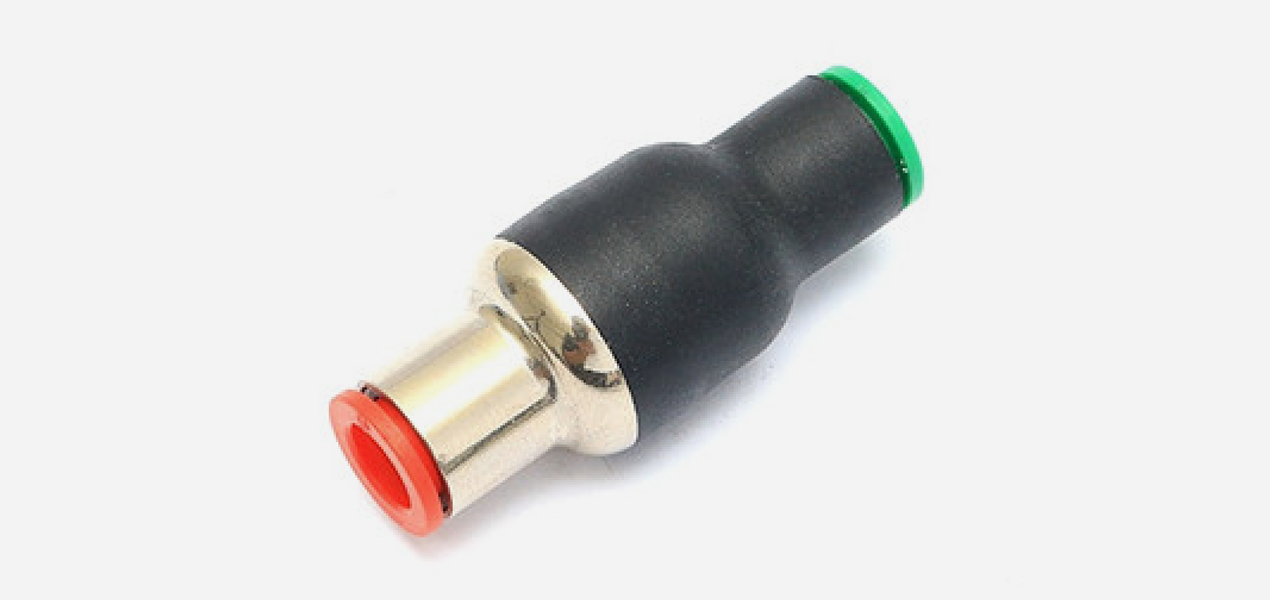The structure, working principle and function of straight-through check valve
Home ✦
Industry Knowledge ✦
The structure, working principle and function of straight-through check valve

The structure, working principle and function of straight-through check valve
Straight-through check valve is a common hydraulic control component with the advantages of simple structure, reliable operation and easy installation. It is widely used in various hydraulic systems. Today, the editor will tell you in detail about its structure, working principle and function. Through this article, you can have a more comprehensive understanding of it.
1. Structure
It is mainly composed of valve body, valve core, spring, guide sleeve and other components. Among them, the valve body is the main part of the valve, usually made of cast iron, cast steel and other materials, with two opposite channels opened inside.
The valve core is the core component for one-way flow control. It is generally made of steel, copper and other materials and is used in conjunction with the valve body. The spring mainly plays the role of returning the valve core to its original position to ensure that the valve is closed. The guide sleeve plays the role of guiding the movement of the valve core.
2. Working Principle
When liquid flows into the channel of the straight-through check valve from one end, the valve core is pushed by the liquid pressure, the spring is compressed, and the product opens.
When liquid flows in from the other end, the valve core will be pressed back to its original position by the resistance of the liquid, the spring will take effect, and the valve will close. This cycle is repeated to achieve the function of one-way flow control.
It can not only be used to control a single pipeline, but can also be used in combination with other valves for more complex control.
For example, it can be combined with check valves, ball valves and other valves to form multi-stage linkage control, making the flow trajectory of the fluid more accurate and reasonable.
3. Function
The functions of straight-through check valve are mainly as follows:
1. Realize one-way flow: The valve only allows the fluid to flow in one direction, preventing the liquid from flowing back.
2. Protect equipment: Some equipment in the hydraulic system only allows one-way flow of liquid, such as flow meters and hydraulic motors. Using it can protect the equipment.
3. Energy saving: Setting appropriate opening pressure and closing pressure can achieve energy-saving control and reduce energy consumption.
4. Control flow: By setting different pressure differences, you can control its opening and closing, thereby controlling the flow of the liquid.
Straight-through check valves have the advantages of simple structure, reliable operation, and easy installation, and are widely used in hydraulic systems. Different types of straight-through check valves are selected according to the pressure and flow rate in different applications, and appropriate opening and closing pressures are set according to specific needs to achieve satisfactory control effects.
1. Structure
It is mainly composed of valve body, valve core, spring, guide sleeve and other components. Among them, the valve body is the main part of the valve, usually made of cast iron, cast steel and other materials, with two opposite channels opened inside.
The valve core is the core component for one-way flow control. It is generally made of steel, copper and other materials and is used in conjunction with the valve body. The spring mainly plays the role of returning the valve core to its original position to ensure that the valve is closed. The guide sleeve plays the role of guiding the movement of the valve core.
2. Working Principle
When liquid flows into the channel of the straight-through check valve from one end, the valve core is pushed by the liquid pressure, the spring is compressed, and the product opens.
When liquid flows in from the other end, the valve core will be pressed back to its original position by the resistance of the liquid, the spring will take effect, and the valve will close. This cycle is repeated to achieve the function of one-way flow control.
It can not only be used to control a single pipeline, but can also be used in combination with other valves for more complex control.
For example, it can be combined with check valves, ball valves and other valves to form multi-stage linkage control, making the flow trajectory of the fluid more accurate and reasonable.
3. Function
The functions of straight-through check valve are mainly as follows:
1. Realize one-way flow: The valve only allows the fluid to flow in one direction, preventing the liquid from flowing back.
2. Protect equipment: Some equipment in the hydraulic system only allows one-way flow of liquid, such as flow meters and hydraulic motors. Using it can protect the equipment.
3. Energy saving: Setting appropriate opening pressure and closing pressure can achieve energy-saving control and reduce energy consumption.
4. Control flow: By setting different pressure differences, you can control its opening and closing, thereby controlling the flow of the liquid.
Straight-through check valves have the advantages of simple structure, reliable operation, and easy installation, and are widely used in hydraulic systems. Different types of straight-through check valves are selected according to the pressure and flow rate in different applications, and appropriate opening and closing pressures are set according to specific needs to achieve satisfactory control effects.

